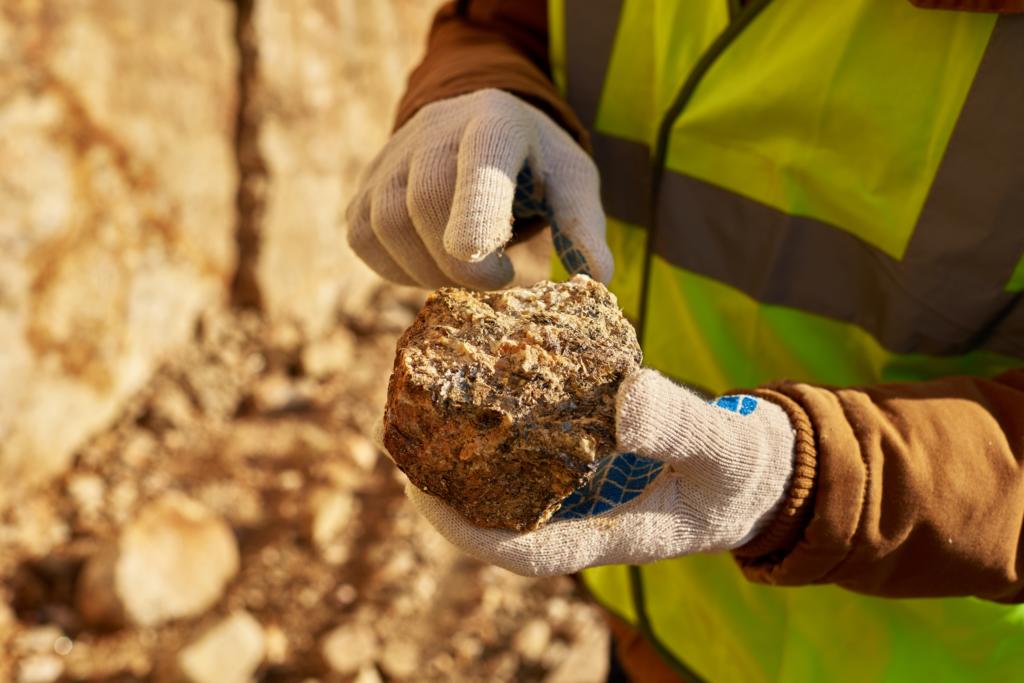
With pressure growing to develop areas adjoining mineral resources, Chris Tofts advises minerals operators to review buffer zone around their sites.
Guidance to safeguard mineral resource and infrastructure
It is nearly 50 years since the Committee of Inquiry into Planning Control Over Surface Mineral Working chaired by Sir Roger Stevens recommended that “for each county mineral consultation maps should be prepared” due to their concern that the lack of detailed geological knowledge should not lead to unnecessary sterilisation of mineral deposits by other development.
Since that recommendation, the principle of consultation areas has been expanded by subsequent guidance to safeguard both mineral resources and mineral infrastructure.
In the 1996 revision of MPG 1 the prevention of the unnecessary sterilisation of mineral resources was emphasised. This also included the requirement that “MPAs should include policies in their plans to safeguard existing rail head and wharfage facilities.”
Safeguarding was also recommended in MPS 1 in 2006 (and its accompanying Practice Guide), requiring that there should be consultation where an application is made for non-minerals development within a Minerals Consultation Area (‘MCA’). MPS 1 and its Practice Guide both referred to the possibility of development near or close to an MSA being refused due to the potential for sterilisation.
The British Geological Survey’s ‘Mineral Safeguarding in England: good practice advice’ (which is referred to in the PPG) picks up on the points made in MPS 1 and its Practice Guide about proximal sterilisation. The BGS report recommends “extending the MSA to avoid sterilisation from development near the mineral resource” and states “it may therefore often be appropriate to extend the MSA beyond the resource boundary.”
The NPPF also refers to the need for Minerals Safeguarding Areas (‘MSAs’) (including infrastructure) [Para 204], (although the definition in the NPPF – “an area designated by Minerals Planning Authorities which covers known deposits of minerals which are desired to be kept safeguarded from unnecessary sterilisation by non-mineral development” – does not accurately reflect the true extent of the safeguarding required). The PPG also picks up on the theme of development in Mineral Safeguarding Areas.
So what happens when development is proposed at the edges of these areas?
Two appeal decisions in Cornwall shed light on the approach taken by the Planning Inspectorate.
The first appeal relates to a proposal to build three houses close to Delabole Quarry [APP/D0840/W/14/3001768]. The area of land subject to the planning application was not owned by the quarry but was within both the mineral permission boundary and the MCA. The most recent ROMP had identified extraction in areas away from the appeal site and the Inspector concluded that it was unlikely that the application site itself would be used for mineral extraction, but that this did not preclude its potential for use for future ancillary operations. He therefore found that the proposal was contrary to the Local Plan and the NPPF because of the potential for future use and so refused permission.
The second appeal relates to a proposal to build 44 houses close to mineral infrastructure at Par [APP/D0840/A/14/2225653]. In this case the land was not within the boundary MCA, but had acted as a buffer zone (for the past 175 years). Whilst the experts agreed that there would be no adverse impact on the new dwellings from the current infrastructure at Par, there was no certainty that future development of infrastructure (or removal of existing infrastructure which screens noise from existing development) would mean that the situation remained acceptable for the new dwellings.
Para 206 of the NPPF refers to not normally “permitting other development proposals in mineral safeguarding areas where they might constrain potential future use.” As the proposed site was outside the MCA, the Inspector did not consider that this applied (unlike Conservation Areas and AONBs which are protected from development outside their area) and the appeal was allowed.
Whilst the operator had previously raised the prospect of extending the MCA (which dated from 1998), the MPA had not taken any action to amend the boundary. It is clear from the Inspector’s decision that whilst the policy remains that mineral resources and minerals infrastructure should be protected, that protection will only extend to the boundary of the MCA/MSA.
What does this mean for mineral operators?
These two cases therefore serve to highlight again the advice in the BGS guidance that the area of protection should be extended beyond the immediate boundaries of the area of concern. When these areas are being drawn up by MPAs, both operators and MPAs should give serious consideration to the types of impacts that may arise from these mineral developments and set the boundary of the MCA/MSA accordingly.
It is noteworthy that the Cornwall Minerals Safeguarding DPD includes buffer zones, Dorset County Council utilises a 250m Mineral Consultation Area around minerals sites, with Devon taking a similar approach.
In light of these two decisions, mineral operators are advised to review the MCA/MSAs for their sites so as to ensure that they include a sufficient buffer zone to allow them to continue their operations without fear of sterilisation by neighbouring development.
With housing developers capitalising on the lack of a five year housing supply in many Local Authority areas and the government pushing for more development on brownfield land, the pressure on sites adjoining mineral resources and infrastructure is increasing. It is becoming increasingly important to ensure that mineral resources and infrastructure are sufficiently protected.
Mineral Plan reviews present an opportunity for mineral operators to ensure that sufficient area is safeguarded.
